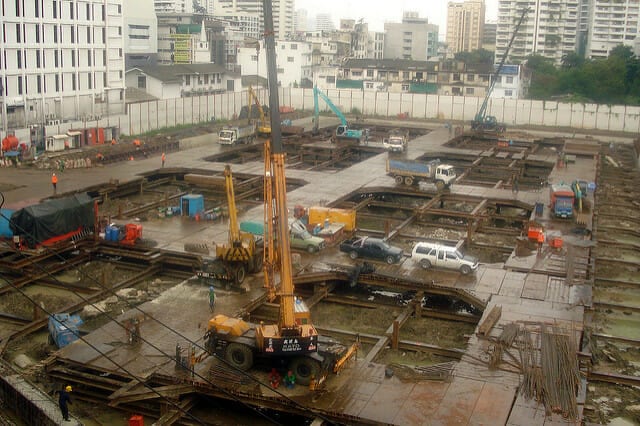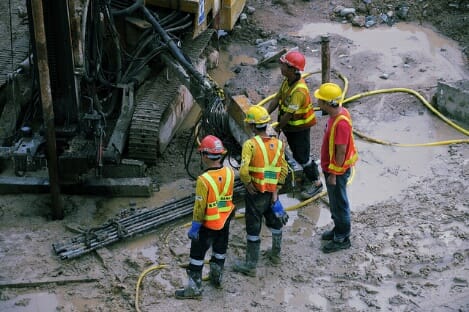
Construction Planning Strategies For Adverse Weather Conditions
Although the harsh winter months are finally behind us, those of us in the construction and engineering industries aren’t exactly sitting back without a care in the world. Construction planning isn’t just affected by snow and ice, but also the rain, high winds, and risks of tornadoes that the spring season brings.

Construction firms must carefully consider how to manage risks associated with adverse weather conditions to keep their projects moving through the spring and into summer. The weatherman isn’t always 100 percent accurate and we can’t predict everything, but there are some measures you can take to ensure that your CPM schedule is on track and running smoothly this spring.
Effects of Weather on Construction Planning
High temperatures, low temperatures, precipitation in all forms, wind conditions, and humidity conditions can halt certain construction projects entirely. Masonry and roofing projects, for example, often get delayed due to temperature. High winds can prompt construction firms to implement crane restrictions, which can delay materials stocking in high rise building construction. Concrete is very difficult to pour when the ground is wet and muddy, and heavy equipment must be moved from dirt to pavement during heavy rains as well.
Not only can bad weather delay your crews from working, but there are many other secondary effects from adverse weather that can put your construction planning at risk. For example, excessive rain can cause muddy conditions that make construction zones inaccessible and impossible to carry out earthwork operations. All that excess moisture from a rainy spring can result in mold and mildew to develop as well.
Managing Weather Risks
Unfortunately, weather-related risks are rarely included in construction site risk assessments because they are considered obvious assumptions, historical data is relied upon, and non-compatible risk assessment methodology is used. And extreme weather events, such as hurricanes and tornadoes, are not typically included in 4D construction planning strategies.

Crew safety should be a top priority, and construction management professionals must be aware of weather-related risks when they are scheduling work for their crews. Sticking as close to schedule is important to maintaining credibility in your firm; however, safe scheduling practices can help reduce the number of disputes, injury claims, and conflicts as well.
Proactive and Protective Measures
Fortunately, modern technology has paved the way for project planning software that can help you plan around bad weather and work it into your project management strategy. It’s a smart idea to invest in a construction weather forecasting service to warn you about bad weather that’s coming and plan ahead for potential delays.
Not only are delays a concern, but also the health and safety of your crew on the ground. One safety precaution to consider for notoriously rainy environments is protective sheeting around the scaffolding to make surfaces less slippery and prevent accidents.
Another measure you can take is placing polythene sheets over construction materials before rain begins to prevent water damage. Temporary structures can also provide cost-effective protection during the rainy season. If you have some time to plan for rain in advance, consider installing temporary downpipes onto roofs to direct rainwater to the ground away from vulnerable construction areas.
Photo credit: Ian Fuller and faungg’s photos via Flickr
Besides helping you plan around bad weather, here’s 7 more ways BIM can save you money.



